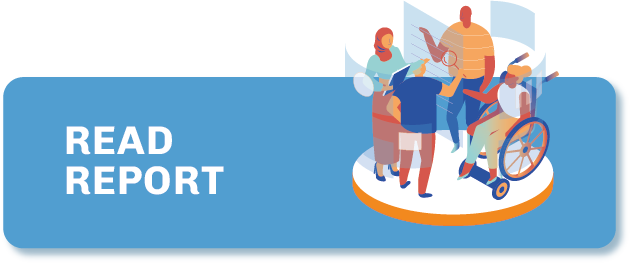Spain
The economic crisis of 2008 spurred the birth in Spain of digital native media organisations founded by journalists, some of which have already surpassed the digital editions of traditional media outlets in terms of audience. Amid a climate of political polarisation, partisan media outlets on both the left and the right of the political spectrum were born. At the same time, others were launched with the mission of combating growing mistrust and media avoidance with alternative proposals of slow, investigative and explanatory journalism, fact-checking and coverage of social issues, international affairs or local journalism. The use of podcasts and newsletters has also been spreading among the media.
GENERAL INFORMATION
Press
freedom
ranking
Internet
penetration
POPULATION
Media organisations
in the Directory
TYPE OF COVERAGE

TYPE OF ORGANISATION

GENDER OF FOUNDERS

Press freedom
Spanish society is tolerant and open to diversity, and journalists are rarely subject to any pressure other than from the authorities. Parliament has begun the process of decriminalising a number of offences – including offences to religious feelings, attacks on the symbols of the state and insults to the crown – that have resulted in violations of freedom of expression in the past.
However, organisations such as Reporters Without Borders highlight an increase in the use of SLAPPs (strategic lawsuits against public participation) against media organisations in Spain, as well as the “serious precariousness” of the profession after the 2008 financial crisis, which Reporters Without Borders notes is now becoming “chronic” – all of which impact press freedom in the country. Journalists who do not have decent working conditions are much more vulnerable to pressure and self-censorship, it adds.
Market structure and dominance
“Spain has a dynamic news market where well-established print and broadcast brands, both nationally and at the regional level, vie for attention with highly competitive digital-born organisations,” notes the Reuters Institute for the Study of Journalism’s Digital News Report 2022. TV news consumption continues to fall in the country, it says, while print’s reach has halved since 2013.
The Atresmedia broadcasting group (Antena 3 and laSexta TV channels) maintains a leading position among offline brands, while broadcaster Mediaset (Telecinco and Cuatro)’s “traditionally successful formula, based on gossip and reality TV began to look tired and lose audience”, it adds.
El País, El Mundo and La Vanguardia are listed by the report as among Spain’s leading legacy print publications, while titles such as elDiario.es, El Confidencial and El Español are among the country’s pure-players. Media concentration in Spain makes it very difficult for new alternative media organisations to emerge, notes Reporters Without Borders.
How media is funded
The economic crisis of 2008 favoured the birth of media outlets founded by journalists; at the beginning of 2021 there were 1,361 digital native media outlets in Spain, according to information in the book Medios nativos digitales en España. These organisations make use of a wide variety of funding sources, although the predominant source is advertising. In addition, these digital native media outlets make use of sponsored content, subscriptions, memberships, print products, crowdfunding campaigns, events, e-commerce, consultancy and communication services, as well as public and private grants, note the book’s authors. However, 80% of digital native media outlets only use one or two of these sources, and several organisations say that the public and private grants available are fewer than in other countries, the book’s authors add.
“Publishers have made good progress in boosting online revenues, after the widespread adoption of digital subscription models in 2019 and 2020,” notes the Reuters Institute in its report. Currently, Spanish media have more than 750,000 digital subscribers (a figure that is up 90% since 2020), it says, citing self-declared industry data. However in spite of this, print revenues are still “20 times digital subscription income for traditional newspapers”, it adds.
Twenty-five profiles of digital native media organisations from Spain are included in the directory. This includes 21 profiles based on interviews and four profiles based on desk research. Of the profiled outlets, 80% were started between 2012 and 2018.
These outlets have an innovative outlook, with an extended use of podcasts and new narratives. Some are for-profit, while others are foundations or are journalist cooperatives. Some are generalist, while others focus on specific topics such as feminism, migration or transparency. Some are hyperlocal, while others analyse international issues. Their size also varies, from the two employees of the hyperlocal El Faradio to the 160 employees of the national generalist El Español.
Advertising is the main source of revenue. Many of these outlets also embrace a membership model as a way to secure the commitment of their audiences, in order to be less dependent on advertising and maintain their independence. This is the case for El Salto, a journalists’ cooperative which does not accept advertising from large listed companies and mandates that advertising revenue cannot exceed 20% of the media outlet’s total revenue. Other organisations do not accept any advertising, for example Civio, a non-profit outlet that promotes transparency in public administration, or porCausa, a non-profit outlet that seeks to curb hate speech.
Consulting and communication agency services are also a source of revenue; for example 70% of the revenue of Ethic, a magazine on global trends, comes from such sources. Crowdfunding campaigns have also been used by several publications, either to support their founding or to finance a project; international in-depth analysis outlet El Orden Mundial, Arabic-language magazine Baynana, Catalonian slow journalism magazine La Mira, and the publication El Español have all utilised such campaigns.
For some outlets, such as the organisation Datadista, this experience has also helped them to validate their ideas. “We didn’t know if people would be interested in what we were doing, because no one was publishing these kinds of stories,” explains Ana Tudela, co-founder of Datadista, which specialises in investigative and data journalism.
The language most of the digital native media outlets publish in is Spanish, and in some cases the official languages of regions such as Catalonia or the Basque country. Publishing in Spanish helps to attract audiences from Latin America. Generalist outlet elDiario.es, which has a successful membership model, has also founded a medium in Argentina. El Español, the biggest of the outlets in the directory, wants to be influential for all Spanish speakers around the world. El Orden Mundial receives 60% of its site visits from Latin America.
One of the main challenges all these organisations face is sustainability. All interviewed media leaders highlight the importance of maintaining a business vision, knowing their audiences well, thinking about product design, planning, managing resources and establishing processes – as well as stopping to think. In the case of the feminist Pikara Magazine, its team stops publishing for a month every three years to reflect on strategy. “It helps us to review what we have done, update our strategy and set goals,” says Andrea Momoitio, one of the coordinators.
Experts in digital media, such as academics Ramón Salaverría and Pilar Martínez-Costa, underline the strength that digital publications in Spain have acquired so far, and wonder if they will be able to keep up amid the current profound economic recession. Some of these outlets are already feeling the effects of the crisis: Revista 5W, an international current affairs magazine, and Infolibre, a generalist title, recently launched a call for help to their members.
The founders of independent media outlets in Spain believe that they play an important role in favouring plurality, fostering a critical spirit and providing a range of shades of grey in the polarisation characterised by traditional media. And they fear that in a polarised society, audiences will demand that they take an ideological position. “I worry that independence will end up being synonymous with irrelevance, and that to avoid this we will end up making the same mistakes as the traditional media,” says Charo Marcos, founder of Kloshletter, a daily general information newsletter.
Media outlets need to diversify their revenue sources to be sustainable and to not depend exclusively on grants or occasional crowdfunding campaigns. Regarding grants, several of those interviewed for Project Oasis regret that there are not as many grants available in Spain as in other countries. In the case of Maldita.es, a non-profit outlet specialised in fact-checking, 80% of its revenue comes from grants from outside Spain. Founders miss out on more support from philanthropy. In this sense, it would be useful to establish alliances with other media outlets or institutions that allow access to international projects and grants.
Organisations that rely solely on membership models are suffering, especially amid the economic crisis and a decline in membership. Many media outlets declare that they have a strong commitment to social and public service journalism. Most membership or subscription models do not establish a paywall, but allow free access to all content even for non-members. Some media outlets, such as Civio, consider themselves activists.
Many media outlets in Spain offer interesting journalistic proposals that try to move away from breaking news and politics, which dominates the news agenda; they also do so by innovating narratives. Their challenge is to focus on their businesses and incorporate management positions into their teams.
Last updated: January 2023
CREDIT FOR STATISTICS: Press Freedom statistics, RSF Press Freedom Index 2022; Internet penetration and population statistics, from Internet World Stats

